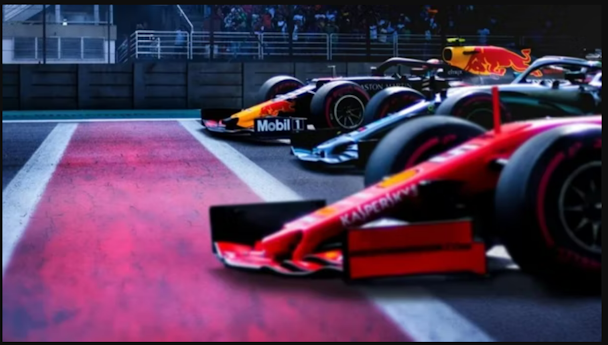Netflix might be gearing up for live sports, but can it afford it?
An outlier among its fellow streamers, Netflix is alone in its lack of live sports rights. As part of The Drum’s Sports Marketing Deep Dive, we look at the likelihood of it ever having skin in the game.

Netflix's Drive to Survive series boosted F1 viewership / Netflix
Netflix has always taken two very firm stances: it doesn’t do ads and it doesn’t do live sports. It did of course backtrack on that first one when in April this year it admitted it would be introducing ads, so it probably wasn’t a massive shock when in June it bid for Formula 1 broadcast rights in the US.
A quick look around its rivals and you can understand why. Apple TV recently bought up the global video rights to North America’s Major League Soccer (MLS), Amazon just nabbed the Champions League in the UK, Discovery has the Olympics in Europe, Paramount+ the US rights to Uefa games...
“All of its competitors have sports,” says François Godard, senior media and telecoms analyst at Enders Analysis. “Netflix is alone without sports, so you could see it bowing to market pressure.”
But alas, it lost out on F1 to existing rights holders ESPN/Disney. Rumor has it the price was too rich for Netflix, with the contract going for between $75m and $90m a year. (Ironically, the rights were reported to have cost just $5m a year previously and it is Netflix’s own documentary series Drive to Survive that is thought to have driven the price up by at least $70m.)
Godard credits Netflix for showing “discipline” and for not “losing its mind” by overbidding for the rights. It does of course raise the question of whether it can afford to.
To date, Netflix’s sports strategy has been focused on premium docuseries with shows like Sunderland ‘Til I Die, Last Chance U and Cheer. But Drive to Survive is the jewel in its crown. The show has been credited for rejuvenating F1 and growing its US and youth audience. It is thought that F1 viewership is up 40% compared with before the show dropped in 2019.
Having created that hype around F1 in the US, it then made logical sense for Netflix to look at owning more of the sport. But what about beyond F1?
Chief exec Reed Hastings has previously said exclusivity would be a “prerequisite for [Netflix] to be able to offer [its] customers a safe deal”. The problem is that exclusive rights are now very expensive and very hard to come by as competition in the market leads to rights holders slicing and dicing packages to multiple players.
“To move the dial for subscriber numbers, it would have to be a really premium sport,” says sports marketer Dan Tunna. “But Netflix cannot afford, nor is it competitive enough in the market to nab, premium sports rights.”
In 2021, Netflix’s global content budget was $17bn, which sports rights would eat up. Paramount+ just paid $3bn for T20 cricket rights in India and Apple TV+ forked out $2.5bn for its MLS deal, for example, while beyond that initial price tag would be the cost of production, marketing and improving its tech stack to cope with live streaming, meaning it’s a costly space to play in. “It’s a hefty chunk of money in terms of its overall content budget and a big shift in its strategy,” says Tunna.
Mel Baroni, business director at M&C Saatchi Sport & Entertainment, says that while it could get the investment for it, Netflix would be going up against media giants that have built their business around live sports.
“If it wants to go up against the ESPNs and Skys whose whole strategies are live sports, it’s going to be very difficult,” she says. “Appointment to view is a completely different way to consume content. Netflix completely owns catch-up and leads the way, but appointment to view is a different game to play.”
By dipping its toes in live without it being its primary business model, Netflix would run the risk of having “random and sporadic rights”, says Baroni. This could put it in “danger of being a hybrid thing that doesn’t really know what it wants to be”.
An alternative could be to acquire an existing live sports entity and fold that into its platform or strike partnership deals, she says. This is a model Amazon Prime Video has adopted via its content partnerships with the likes of Discovery and Dazn.
The right rights?
According to Godard, Netflix could look at upcoming auctions in Europe. Despite there being less choice of rights there, he could still see it buying cheap secondary rights to a local league: “Here is an option I would consider if I was Netflix: buy international rights to a European league, say the Bundesliga [German football league] – it’s not that expensive. Then build a story around it, creating documentaries and chat shows.”
In place of live sports, Baroni says it could explore more behind-the-scenes shows but drop episodes closer to the live race or game instead of airing retrospective docuseries after the season has wrapped.
“Netflix is closer to taking that plunge than it ever has been before, just simply because it has never had that pressure before,” says Tunna. “But whether the right rights are there, that’s the challenge.”
Check out The Drum’s latest Deep Dive, The New Sports Marketing Playbook, and learn the tactics employed by the world’s biggest sports organizations and their star athletes to stay at the top of their game.

